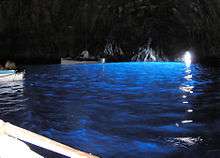Travels of Hans Christian Andersen
Hans Christian Andersen, a 19th century Danish writer most famous for his fairy tales, wrote a number of books about his travels and is associated with a number of places that present-day tourists can visit.
Denmark
Odense
The primary locations are museums about Andersen in Odense, the third-largest city of Denmark. The H.C. Andersens Hus (house of Hans Christian Andersen) at Hans Jensens Stræde 45 is his claimed place of birth.
- Hans Christian Andersen Museum, Bangs Boder 29, ☎ +45 65 51 46 01. Daily 10AM-4PM (or 6 PM in July-August). A museum dedicated to the city's most famous son, author and poet Hans Christian Andersen, most famous for his fairy tales and in particular The Ugly Duckling and the Little Mermaid. Part of the museum is located in the house where Andersen was supposedly born (though he would never confirm it). The impressive collection is mainly documents from his life and times, period furniture, and many drawings and paper clippings he is famous for at home. 55 DKK for entrance.
- Munkemøllestræde H.C. Andersens barndomshjem, Munkemøllestræde 3.
- Bramstrup herregård
Copenhagen
Hans Christian Andersen lived for the most part of his life in Nyhavn, Copenhagen in three different locations: Number 20 (then number 280) from 1834 to 1838, number 67 from 1848 to 1865 and number 18 which he moved in in 1871.[1] The red building as number 20 has a commemorative plaque visible from the street. It reads "H. C. Andersen / lived here / when his first / fairy tale booklet was published / May 1835".[2]
Other parts of Zealand

- Gisselfeld. Site where Andersen wrote The ugly duckling.
Andersen's travels
Travel to Italy and The Improvisatore

Andersen's novel The Improvisatore (1835) is in part a travelogue about Italy and contains travel guide descriptions of Rome, Naples, Herculaneum, Sorrento, Paestum and Capri, as well as a minor part about Venice and Milan. The book made the Blue Grotto at Capri famous.
The background for the novel was a trip to Italy that Hans Christian Andersen made in 1833 and 1834. He got a travel stipend on March 13, 1833 and set off on March 22 the same year. He traveled via Lübeck, Hamburg, Celle, Hanover, Kassel and on to Frankfurt and Mainz.
The novel begins with:
- Whoever has been in Rome is well acquainted with the Piazza Barberina, in the great square, with the beautiful fountain, where the Tritons empty the spouting conchshell, from which the water springs upwards many feet.
Travel to Spain
Hans Christian Andersen arrived in Málaga, Spain on 30 September 1862 on a steamship from Gibraltar. He stayed at the Hotel del Oriente del Fonda. He travelled to Granada to see the Alhambra and returned to Málaga on 22 October 1862. He left on 29 October 1862 for Cartagena. There is a statue of Andersen in the Plaza de la Marina in Málaga, put up to commemorate the 200th anniversary of his birth.
See also
- Hvor boede H.C. Andersen i København?
- "H. C. ANDERSEN / BOEDE HER / DA HANS FØRSTE / EVENTYRHEFTE UDKOM / MAJ 1835", Mindetavle for H. C. Andersen